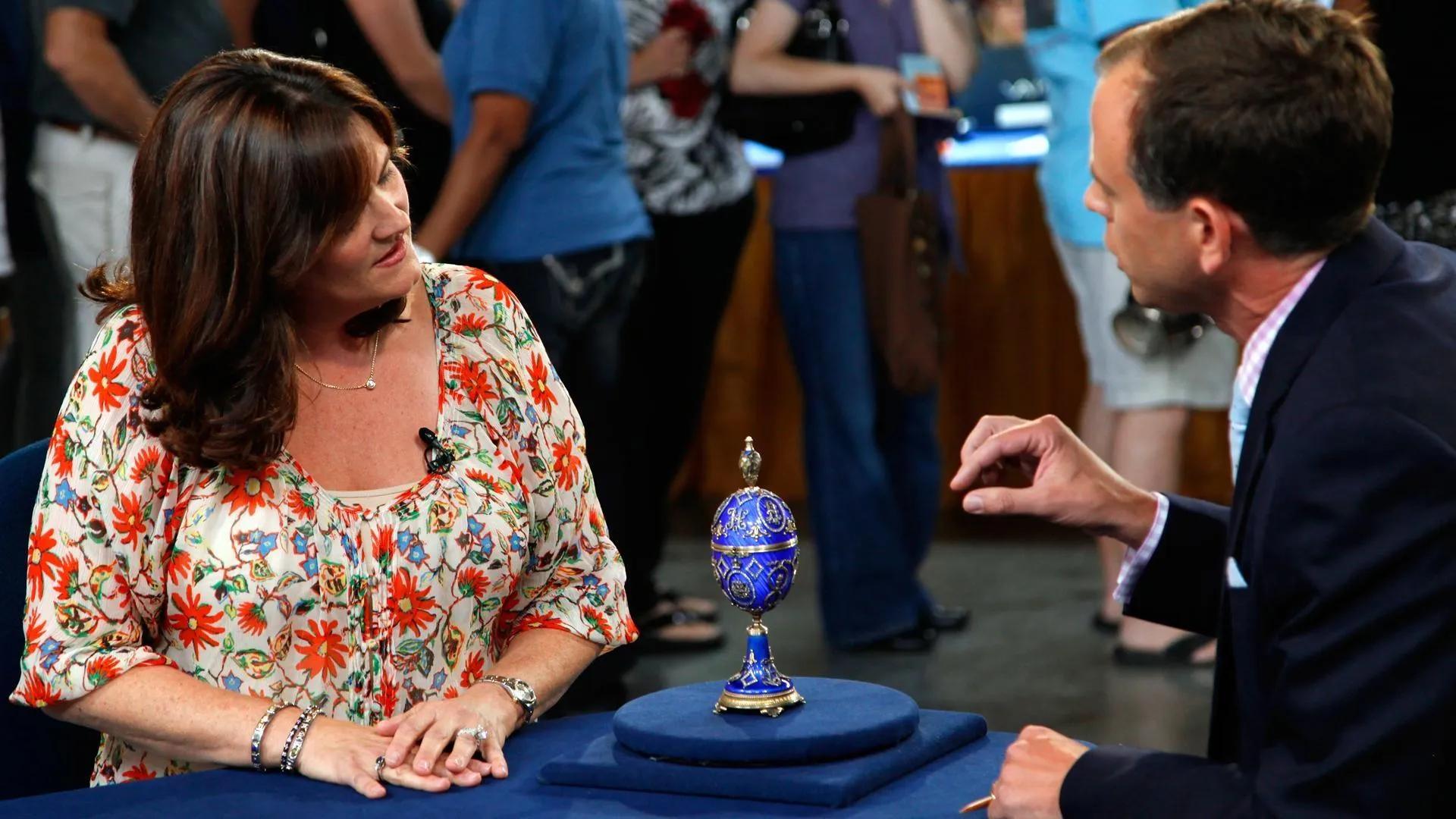GUEST: I was looking in an auction catalog in Atlanta, and I saw this egg. And so I thought I would go and check it out. And I couldn't go to the auction, so I called in a phone bid and it went over my bid really quickly, so I hung up the phone and I was really upset. And my husband said, "Why don't you call back and see what it went for?" And so I did, and they told me, and he said, "Why don't you see if you can buy it?" I called the lady, she said, "Well, sometimes people get caught up in the moment and they're kind of in remorse that they bought it." And so she asked the guy and he did, and so I got to buy it for what he bought it for.
APPRAISER: And may I ask how much you paid for it?
GUEST: Yes, um... $15,000.
APPRAISER: What do you believe this item is?
GUEST: I am hoping it's a Fabergé egg. I don't know if it is, but I have a lot of books and I've looked at all the hallmarks. I know anything could be faked, so I don't know.
APPRAISER: Okay, well, it's a great item to see on the Roadshow and I am here to tell you that, unfortunately, it is not Fabergé.
GUEST: Okay.
APPRAISER: It is something that we sort of jokingly refer to as "Fauxbergé."
GUEST: Okay.
APPRAISER: It is an item that, while the craftsmanship is very, very good, it’s an intentional fake.
GUEST: Okay.
APPRAISER: There are many reasons and ways we can find out. And the first of which is the decoration here. You see that it's sort of punched work out. Each one should be individually chased. And then also on the wreaths, each one of those should be individually hand chased, and these ones have come out of a mold, and they've been punched out. Also, we have all sorts of other very small discrepancies with it. One of the things is we like to call it a pastiche, or it's sort of a hodge-podge of all these elements brought together. What looks too good to be true, often is too good to be true.
GUEST: Okay.
APPRAISER: It's very well executed, but there are some issues with the enameling. It's a lovely egg.
GUEST: I noticed that that was a different color. I don't know if that made a difference.
APPRAISER: Well, exactly. It's little, small things like that. We have split pearls on the inside, and they are diamonds. But they're single-cut diamonds, not rose-cut diamonds. So it's all these small discrepancies we have through and through. So if we take a look at the bottom of this piece, we see there are these marks that, unfortunately, while they do appear to be Fabergé marks, they’re intentional fakes. I think it was actually made in Russia.
GUEST: Oh, okay.
APPRAISER: They're incredibly made, and it's such a shame that they put fake marks on it. Because they're fantastic. They're really well done. You told me you paid $15,000 for it.
GUEST: Yeah.
APPRAISER: I would say that a realistic auction estimate or value for this today would be between about $3,000 and $4,000.
GUEST: Okay.
APPRAISER: If it were real Fabergé... It would be ridiculous. It would be hundreds and hundreds of thousands of dollars. And I caution you, as well as our viewers, when reading catalog descriptions, read them very carefully, because the specific way it describes... If it says, "bearing Fabergé marks” they make no guarantees.
GUEST: Well, that's what I thought. So when do you think it was made?
APPRAISER: I think it was made within the last 30 years.
GUEST: Really?
APPRAISER: Yes. It's a great item, but I'm just sorry to tell you it's not right.
GUEST: (laughing) Okay.
APPRAISER: So thank you very much for bringing it in.
GUEST: So I can put my husband's ashes in there one day.
APPRAISER: You can, but it just won't be Fabergé.
GUEST: (Laughing) Okay. Thanks again. Thank you.
APPRAISER: You're welcome.



